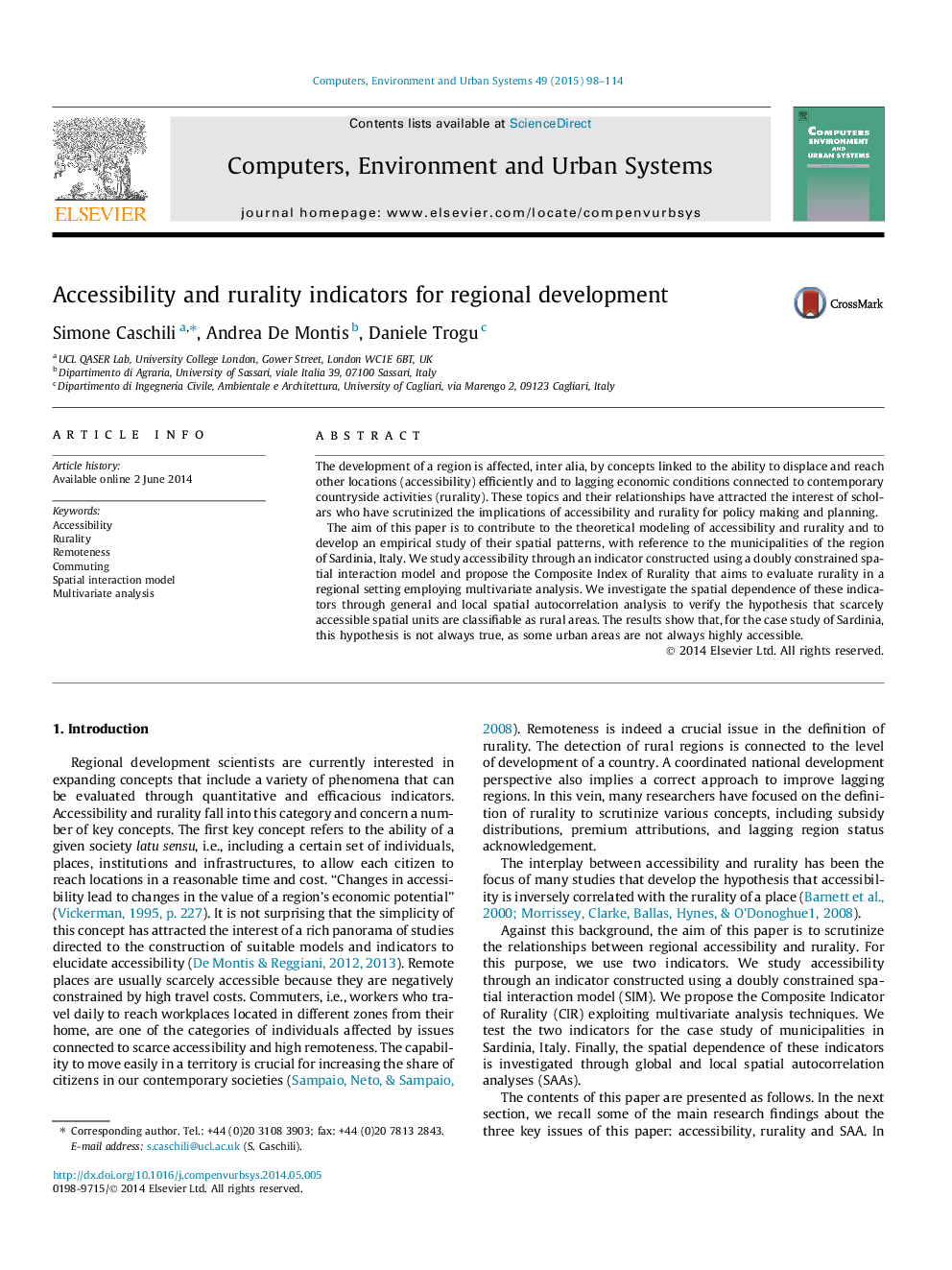| کد مقاله | کد نشریه | سال انتشار | مقاله انگلیسی | نسخه تمام متن |
|---|---|---|---|---|
| 506303 | 864891 | 2015 | 17 صفحه PDF | دانلود رایگان |
• We propose two indicators to evaluate accessibility and rurality in regional settings.
• Accessibility indicator is based on a double constrained spatial interaction model.
• The Composite Index of Rurality is constructed of variables grouped in three pillars.
• We study spatial autocorrelation of the accessibility indicator and CIR.
• There is a weak positive spatial correlation between the accessibility and rurality.
The development of a region is affected, inter alia, by concepts linked to the ability to displace and reach other locations (accessibility) efficiently and to lagging economic conditions connected to contemporary countryside activities (rurality). These topics and their relationships have attracted the interest of scholars who have scrutinized the implications of accessibility and rurality for policy making and planning.The aim of this paper is to contribute to the theoretical modeling of accessibility and rurality and to develop an empirical study of their spatial patterns, with reference to the municipalities of the region of Sardinia, Italy. We study accessibility through an indicator constructed using a doubly constrained spatial interaction model and propose the Composite Index of Rurality that aims to evaluate rurality in a regional setting employing multivariate analysis. We investigate the spatial dependence of these indicators through general and local spatial autocorrelation analysis to verify the hypothesis that scarcely accessible spatial units are classifiable as rural areas. The results show that, for the case study of Sardinia, this hypothesis is not always true, as some urban areas are not always highly accessible.
Journal: Computers, Environment and Urban Systems - Volume 49, January 2015, Pages 98–114
